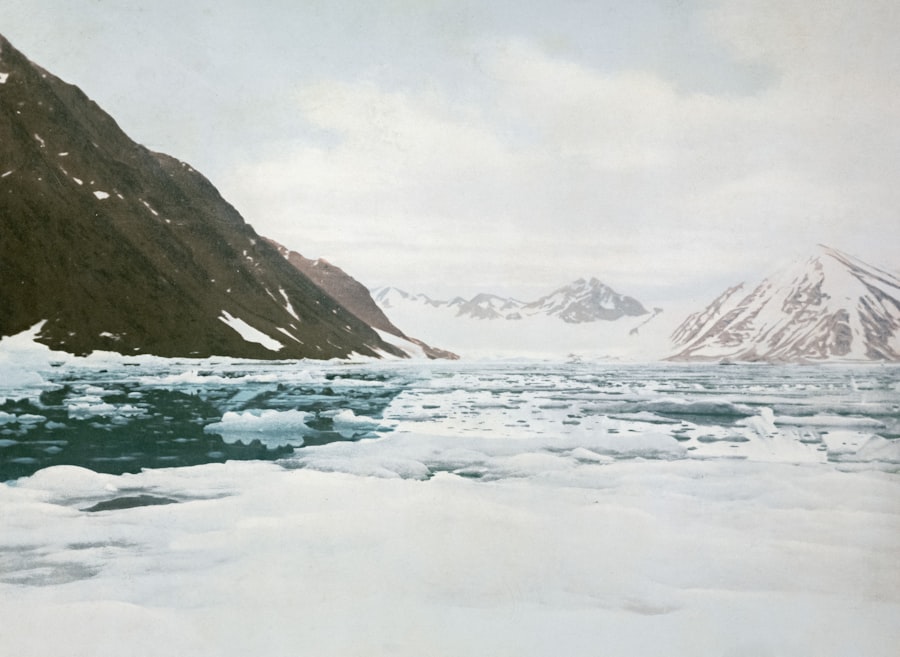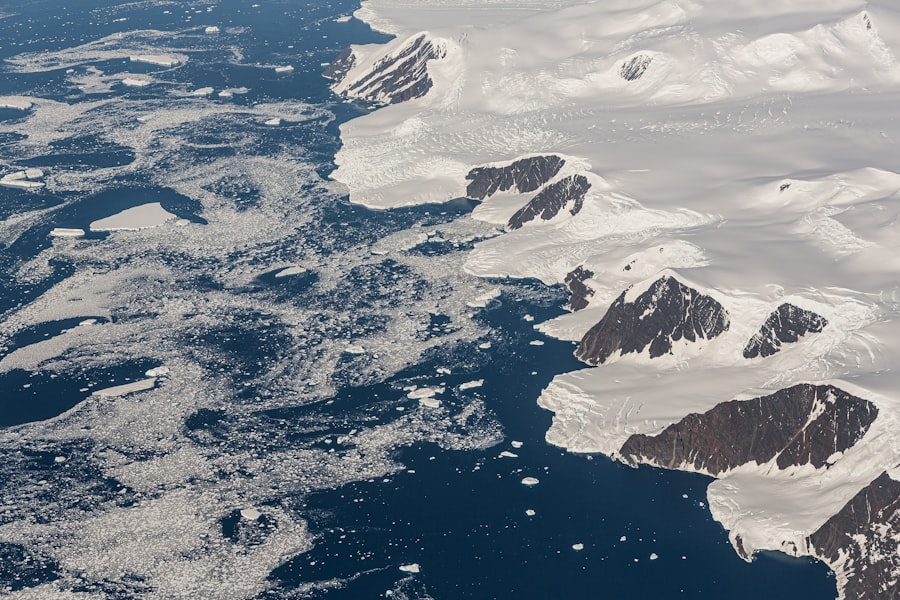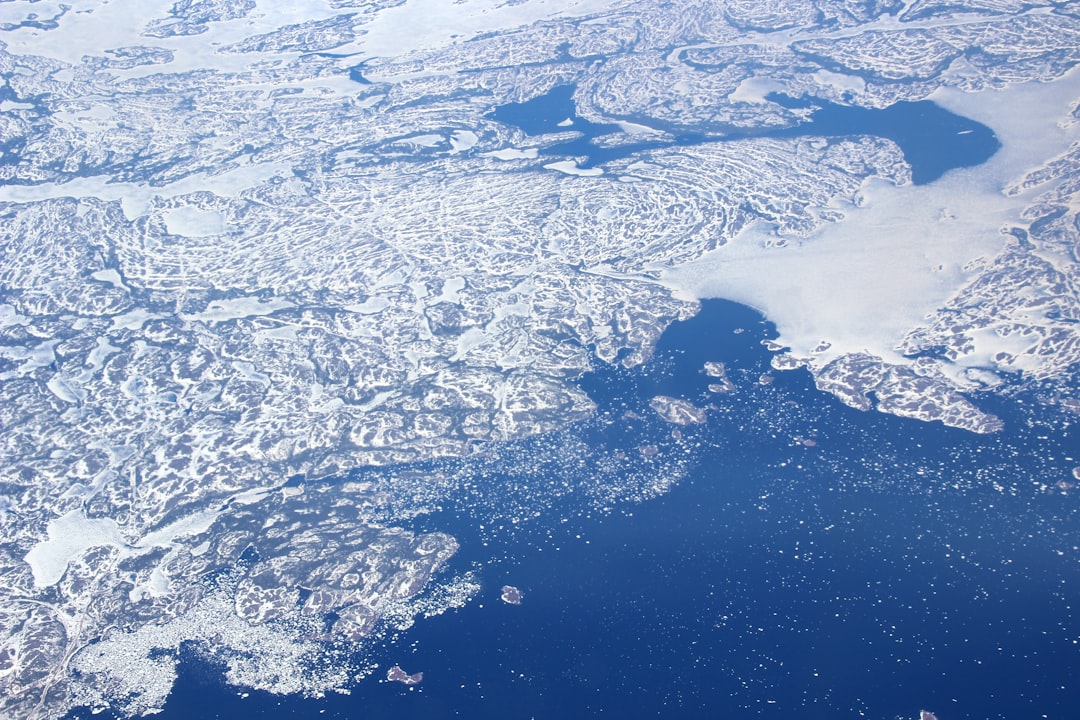The Northwest Passage, a fabled maritime route connecting the Atlantic and Pacific Oceans through the Arctic archipelago of Canada, has captivated explorers and adventurers for centuries. Its allure lies not only in the promise of a shortcut for trade but also in the mystery surrounding its icy waters. The quest for this passage dates back to the late 15th century when European explorers sought new trade routes to Asia.
Notably, John Cabot’s voyages in 1497 marked the beginning of European interest in the northern seas, although it would take many more decades before any significant progress was made. The first successful navigation of the Northwest Passage was achieved by Roald Amundsen between 1903 and 1906. His expedition, which took three years to complete, was fraught with peril and uncertainty.
Amundsen’s meticulous planning and understanding of the Arctic environment allowed him to traverse the treacherous waters, setting a precedent for future explorers. However, it wasn’t until the mid-20th century that the passage began to be recognized as a viable shipping route, particularly with advancements in navigation technology and icebreaker vessels. The historical significance of the Northwest Passage continues to resonate today, as it symbolizes humanity’s enduring quest for exploration and understanding of the natural world.
Key Takeaways
- The Northwest Passage has a long and storied history of exploration and navigation, dating back to the early 16th century.
- Navigating the Northwest Passage presents numerous challenges, including treacherous ice conditions, unpredictable weather, and remote and isolated locations.
- Proper planning and preparation are essential for a successful journey through the Northwest Passage, including obtaining necessary permits and ensuring adequate supplies and equipment.
- The route from Baffin Bay to the Beaufort Sea offers breathtaking scenery and the opportunity to encounter diverse wildlife, including polar bears, whales, and seabirds.
- Travelers along the Northwest Passage have the opportunity to engage with indigenous peoples and learn about their rich cultures and traditions.
Challenges of Navigating the Northwest Passage
Navigating the Northwest Passage presents a myriad of challenges that can test even the most seasoned mariners. One of the most formidable obstacles is the ever-changing ice conditions that characterize the region. The Arctic ice pack can shift dramatically due to weather patterns, making it difficult to predict safe passages.
Icebergs, pack ice, and brash ice can all pose significant threats to vessels attempting to navigate these waters. Mariners must possess not only advanced navigational skills but also a deep understanding of ice behavior to avoid potential disasters. In addition to ice hazards, the unpredictable weather patterns of the Arctic can complicate navigation further.
Fog, storms, and extreme cold can descend rapidly, reducing visibility and making it challenging to maintain course. The remoteness of the region adds another layer of difficulty; rescue operations are often hampered by the lack of nearby facilities and the harsh conditions that prevail. As such, those who embark on this journey must be prepared for a range of scenarios, from mechanical failures to sudden weather changes, all while ensuring their vessel is equipped to handle the rigors of Arctic travel.
Planning and Preparation for the Journey

Planning a journey through the Northwest Passage requires meticulous attention to detail and thorough preparation. Prospective travelers must first conduct extensive research on the route, including current ice conditions, weather forecasts, and potential hazards. This information is crucial for determining the best time to embark on the journey, as summer months typically offer more favorable conditions due to melting ice.
However, even during these months, unpredictability remains a constant factor. In addition to logistical considerations, travelers must also ensure their vessels are adequately equipped for Arctic conditions. This includes outfitting boats with reinforced hulls capable of withstanding ice impacts, as well as ensuring that all safety equipment is in place and functional.
Communication devices are essential for maintaining contact with support teams or emergency services, while provisions for food, water, and fuel must be carefully calculated to last throughout the journey. Ultimately, thorough planning can mean the difference between a successful expedition and a perilous situation in one of the world’s most challenging environments.
The Route: From Baffin Bay to the Beaufort Sea
| Location | Distance (km) | Duration (days) |
|---|---|---|
| Baffin Bay | 0 | 0 |
| Baffin Island | 500 | 5 |
| Greenland Sea | 800 | 8 |
| Arctic Ocean | 1500 | 15 |
| Beaufort Sea | 2500 | 25 |
The route through the Northwest Passage typically begins in Baffin Bay, where vessels set sail from Greenland or Canada’s eastern coast. This initial leg of the journey is characterized by stunning landscapes and dramatic ice formations that captivate adventurers. As they navigate through Baffin Bay, travelers must remain vigilant for shifting ice floes and strong currents that can alter their course unexpectedly.
The breathtaking scenery serves as both a reward and a reminder of nature’s power. As vessels continue westward toward the Beaufort Sea, they traverse a series of channels and straits that make up the heart of the Northwest Passage. Each segment presents its own unique challenges and rewards.
The narrow channels can become congested with ice, requiring careful navigation and sometimes even waiting for favorable conditions to pass through safely. Along this route, explorers may encounter remote islands and pristine landscapes that have remained untouched by human activity for centuries. The journey culminates in the Beaufort Sea, where travelers can finally appreciate the vastness of their achievement while reflecting on the challenges they have overcome.
Wildlife Encounters along the Northwest Passage
The Northwest Passage is not only a route for human exploration but also a vital habitat for diverse wildlife. As travelers navigate these icy waters, they may encounter an array of species that thrive in this unique environment. Among them are iconic Arctic animals such as polar bears, seals, and walruses, each adapted to survive in extreme conditions.
Observing these creatures in their natural habitat offers an unparalleled experience that deepens one’s appreciation for the fragility of Arctic ecosystems. Birdwatchers will also find delight in the avian life that inhabits the region. Migratory birds flock to the area during summer months, providing opportunities for enthusiasts to witness species such as puffins and Arctic terns.
The presence of these birds serves as a reminder of the interconnectedness of life in this remote part of the world. However, travelers must approach wildlife encounters with respect and caution, ensuring that their presence does not disrupt these delicate ecosystems or endanger the animals they seek to observe.
Indigenous Peoples and Culture in the Northwest Passage

The history of the Northwest Passage is deeply intertwined with that of Indigenous peoples who have inhabited these lands for thousands of years. The Inuit and other Indigenous groups possess rich cultural traditions and knowledge that have been passed down through generations. Their understanding of the land and sea has been shaped by centuries of experience navigating these challenging environments, making them invaluable sources of information for modern explorers.
Engaging with Indigenous communities along the route offers travelers a unique opportunity to learn about their traditions, stories, and ways of life. Many Indigenous peoples maintain a close relationship with their environment, relying on traditional practices such as hunting and fishing for sustenance. By fostering respectful interactions with these communities, travelers can gain insights into sustainable living practices that have allowed Indigenous peoples to thrive in harmony with nature for millennia.
Climate Change and the Impact on the Northwest Passage
Climate change has emerged as a significant factor influencing navigation through the Northwest Passage. As global temperatures rise, Arctic ice is melting at an alarming rate, altering traditional patterns of navigation and wildlife behavior. While this may open up new shipping routes and opportunities for exploration, it also raises concerns about environmental degradation and its impact on Indigenous communities who rely on stable ecosystems.
The reduction in sea ice not only affects navigation but also poses risks to marine life that depend on ice-covered habitats for breeding and feeding. As species adapt to changing conditions, there is potential for shifts in biodiversity that could have far-reaching consequences for both wildlife and human populations in the region. Travelers navigating these waters must remain aware of their environmental impact and consider how their actions contribute to broader issues related to climate change.
Notable Expeditions and Explorers of the Northwest Passage
Throughout history, numerous expeditions have sought to conquer the challenges posed by the Northwest Passage. Among them is Sir John Franklin’s ill-fated expedition in 1845, which aimed to find a navigable route through the Arctic but ended tragically when his ships became trapped in ice. The mystery surrounding Franklin’s disappearance captivated public imagination and led to extensive search efforts that spanned decades.
Another notable figure is Henry Hudson, whose explorations in the early 17th century laid groundwork for future expeditions into northern waters. His voyages contributed significantly to European understanding of Arctic geography and inspired subsequent explorers like Amundsen. Each expedition has added layers to the rich tapestry of history surrounding the Northwest Passage, highlighting both human ambition and vulnerability in one of Earth’s most formidable environments.
Safety and Navigation Tips for Traveling the Northwest Passage
For those daring enough to embark on a journey through the Northwest Passage, safety should always be a top priority. Mariners are advised to familiarize themselves with local regulations regarding navigation in Arctic waters, as well as any specific guidelines set forth by Indigenous communities or environmental organizations. Understanding these regulations not only ensures compliance but also fosters respectful interactions with local cultures.
Additionally, travelers should invest in comprehensive training related to cold-water survival techniques and emergency response protocols. Knowledge of first aid procedures can prove invaluable in remote areas where medical assistance may be far away. Regular communication with support teams or fellow travelers is essential for maintaining safety throughout the journey; sharing updates on conditions or potential hazards can help mitigate risks associated with navigating this challenging environment.
The Future of the Northwest Passage: Opportunities and Concerns
As climate change continues to reshape Arctic landscapes, discussions surrounding the future of the Northwest Passage have intensified.
This potential economic boon has attracted interest from various stakeholders eager to capitalize on emerging trade routes.
However, these opportunities come with significant concerns regarding environmental sustainability and Indigenous rights. Increased shipping traffic poses risks not only to fragile ecosystems but also threatens traditional ways of life for Indigenous communities who have long relied on these waters for sustenance. Balancing economic interests with environmental stewardship will be crucial as policymakers navigate this complex landscape in pursuit of a sustainable future for all who call this region home.
Personal Reflections and Lessons Learned from Navigating the Northwest Passage
Navigating through the Northwest Passage is an experience that leaves an indelible mark on those who undertake it. For many adventurers, it serves as a profound reminder of nature’s power and beauty—a humbling experience that fosters respect for both land and sea. The challenges faced along this journey often lead to personal growth; overcoming obstacles requires resilience, adaptability, and teamwork.
Moreover, interactions with Indigenous communities provide invaluable lessons about sustainability and coexistence with nature. Travelers often return from their journeys with newfound perspectives on environmental stewardship and cultural appreciation—insights that extend far beyond their time spent navigating icy waters. Ultimately, traversing the Northwest Passage becomes not just an adventure but also an opportunity for reflection on humanity’s relationship with nature and its responsibility toward preserving fragile ecosystems for future generations.
The Northwest Passage, a sea route connecting the Atlantic and Pacific Oceans through the Arctic Ocean, has long been a subject of intrigue and exploration. For those interested in the geographical and historical significance of this passage, a related article can be found on MyGeoQuest. This article delves into the challenges and triumphs faced by explorers navigating this treacherous route. To learn more about the Northwest Passage and its impact on global exploration, you can read the full article by visiting MyGeoQuest’s sample page.
WATCH NOW! Unlocking Disaster: 7 Choke Points That Could Fracture Our Connected World Overnight
FAQs
What is the Northwest Passage?
The Northwest Passage is a sea route that connects the Atlantic and Pacific Oceans through the Arctic Ocean. It consists of a series of waterways along the northern coast of North America.
Why is the Northwest Passage significant?
The Northwest Passage is significant because it offers a shorter shipping route between Europe and Asia, compared to the traditional route through the Panama Canal. It also has historical and strategic importance for exploration and trade.
Is the Northwest Passage navigable year-round?
The Northwest Passage is not navigable year-round due to ice cover in the Arctic region. However, with the effects of climate change, the ice cover has been decreasing, making the passage more accessible during the summer months.
Who first discovered the Northwest Passage?
The Northwest Passage was first discovered by Sir Martin Frobisher in 1576, although it was not successfully navigated until the early 20th century.
What are the environmental concerns associated with the Northwest Passage?
The melting of Arctic ice due to climate change has raised concerns about the environmental impact of increased shipping traffic through the Northwest Passage. This includes potential oil spills, disturbance to marine life, and the introduction of invasive species.
